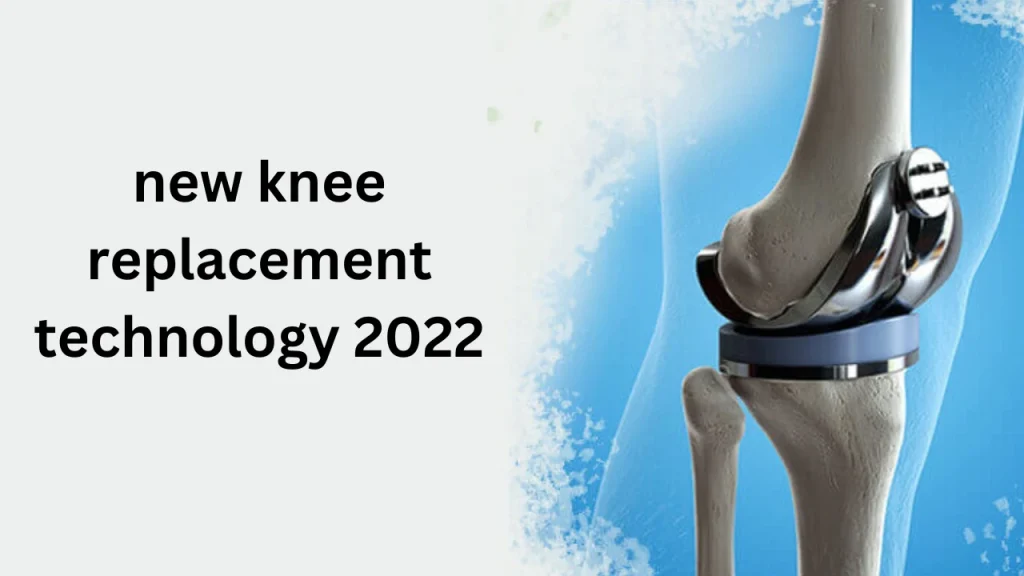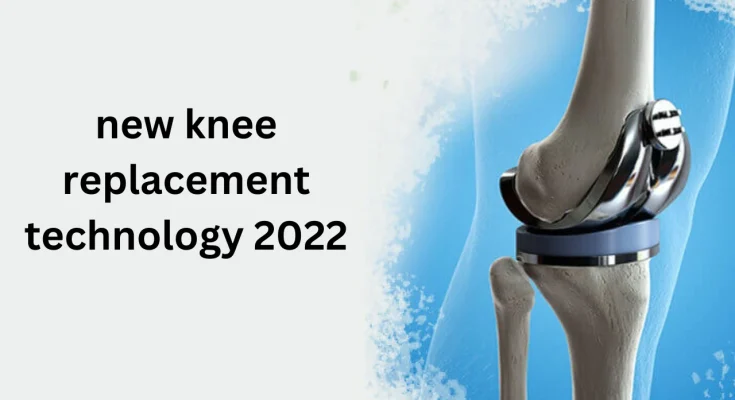For millions of people worldwide, chronic knee pain casts a long shadow over their lives. Osteoarthritis, the most common culprit, grinds cartilage and bone, leading to stiffness, limited mobility, and debilitating discomfort. However, hope springs eternal with the constant advancements in new knee replacement technology 2022 saw exciting strides in this field, paving the way for personalized, minimally invasive, and longer-lasting solutions.
1. Precision Reigns: Robotics and Navigation Systems Shine
Imagine replacing a worn-out tire with surgical precision. new knee replacement technology 2022 That’s the promise of robot-assisted and computer-assisted surgery (RAS/CAS). These technologies use 3D imaging and robotic arms to guide surgeons in implant placement. 2022 saw continued refinements in these systems, leading to:
- Increased accuracy: RAS/CAS helps position implants to within fractions of a millimeter, mimicking the patient’s natural anatomy more closely. This translates to improved mobility, reduced pain, and better long-term outcomes.
- Minimally invasive procedures: Smaller incisions are possible due to the robotic assistance, resulting in faster recovery times, less tissue damage, and reduced pain.
- Personalized planning: 3D images allow surgeons to virtually plan the surgery, tailoring it to each patient’s unique anatomy.
READ MORE INTRESTING ARTLICE:Maytag Centennial Commercial Technology Washer :9 Important Points
2. Tailored Solutions: 3D Printing Personalizes Implants
One size doesn’t fit all, especially when it comes to new knee replacement technology 2022. 3D printing technology is revolutionizing the field by creating custom-made implants based on individual patient scans. These bespoke components offer several advantages:
- Improved fit: Custom implants perfectly match the patient’s bone structure, leading to better stability, reduced wear and tear, and potentially longer implant life.
- Faster recovery: Precise fit minimizes bone removal during surgery, resulting in reduced pain and quicker healing.
- Reduced risk of complications: Customized implants can address complex anatomical situations, potentially lowering the risk of loosening or instability.
3. Material Marvels: Enhanced Durability and Functionality
The search for stronger, longer-lasting implant materials continues. 2022 saw exciting developments in:
- Bioactive surfaces: Coatings like hydroxyapatite encourage bone growth around the implant, potentially improving fixation and longevity.
- Highly cross-linked polyethylene: This advanced plastic insert in the implant offers improved wear resistance, potentially delaying the need for revision surgery.
- Mobile-bearing designs: These implants allow for a gliding motion within the joint, potentially mimicking natural knee movement and improving functionality.
4. Smart Implants: Monitoring Progress and Predicting Issues
Imagine an implant that can talk to your doctor. While still in its early stages, sensor-embedded implants hold immense promise. These “smart” implants can:
- Monitor implant performance: Sensors can track parameters like pressure and motion, providing valuable insights into implant stability and wear.
- Predict potential problems: Early detection of issues like loosening or wear can lead to timely intervention and prevent major complications.
- Improve rehabilitation: Sensor data can inform personalized rehabilitation plans, optimizing recovery and maximizing implant longevity.

5. Minimally Invasive Techniques: Smaller Incisions, Faster Recovery
Traditional knee replacement surgery involves a large incision. However, minimally invasive techniques (MIS) are gaining ground, offering several benefits:
- Smaller incisions: This translates to less tissue damage, less pain, and faster healing.
- Faster recovery: Patients often return home sooner and experience quicker functional improvement.
- Reduced risk of complications: Smaller incisions can decrease the risk of infection and other complications.
Looking Ahead: A Brighter Future for Knee Replacements
The year 2022 witnessed significant advancements in new knee replacement technology. From personalized implants and robotic surgery to smart technology and minimally invasive techniques, the future looks promising for restoring pain-free mobility and improving quality of life for millions suffering from knee pain new knee replacement technology 2022. However, it’s important to remember that these technologies are still evolving, and consulting with a qualified orthopedic surgeon is crucial to determine the most suitable treatment option for your individual case.
Understanding New Knee Replacement Technology
Knee replacement surgery, also known as knee arthroplasty, has long been a viable treatment option for individuals grappling with severe knee pain and limited mobility caused by conditions like osteoarthritis, rheumatoid arthritis, and traumatic injuries. Traditional knee replacement procedures involve replacing damaged knee joint surfaces with prosthetic components made of metal, plastic, or ceramic.
However, the new knee replacement new knee replacement technology 2022 represents a significant leap forward in terms of precision, durability, and patient satisfaction. This latest innovation incorporates state-of-the-art materials, advanced surgical techniques, and enhanced implant designs to deliver superior outcomes and optimize the overall patient experience.
Key Features and Benefits
1. Personalized Implant Designs:
The new knee replacement technology 2022 offers personalized implant designs tailored to each patient’s unique anatomy. Utilizing advanced imaging techniques such as MRI and CT scans, orthopedic surgeons can now create customized implants that fit more precisely, resulting in improved stability, range of motion, and longevity.
2. Enhanced Durability and Longevity:
With the introduction of innovative materials and surface technologies, modern knee implants are engineered to withstand the rigors of daily activities while minimizing wear and tear new knee replacement technology 2022. These advancements contribute to enhanced durability and longevity, reducing the likelihood of implant failure and the need for revision surgery in the future.
3. Minimally Invasive Techniques:
New knee replacement technology emphasizes minimally invasive surgical techniques, allowing for smaller incisions, reduced soft tissue damage, and faster recovery times new knee replacement technology 2022. By leveraging robotic-assisted tools and navigation systems, surgeons can achieve greater precision and accuracy during implant placement, resulting in improved functional outcomes and reduced postoperative pain.
4. Rapid Rehabilitation Protocols:
Incorporating evidence-based rehabilitation protocols and patient-centered care models, the latest knee replacement technology prioritizes early mobilization and accelerated recovery new knee replacement technology 2022. Patients undergo comprehensive preoperative education and postoperative rehabilitation programs aimed at optimizing muscle strength, joint stability, and overall functional outcomes.
READ MORE INTRESTING ARTICLE:SKYTECH SOLUTION
Considerations and Patient Education
While the advancements in new knee replacement technology 2022 offer promising benefits, it’s essential for patients to be well-informed and actively involved in the decision-making process. Before undergoing knee replacement surgery, individuals should consider the following factors:
- Consultation with Orthopedic Specialists: Seek consultation with board-certified orthopedic surgeons who specialize in joint replacement procedures. Discuss your medical history, treatment goals, and concerns to determine if knee replacement surgery is the right option for you.
- Understanding Risks and Complications: Like any surgical procedure, knee replacement surgery carries inherent risks, including infection, blood clots, implant loosening, and nerve damage. It’s crucial to have a thorough understanding of potential complications and how they can be mitigated through proper preoperative assessment and postoperative care.
- Rehabilitation and Recovery Expectations: Rehabilitation plays a pivotal role in the success of knee replacement surgery new knee replacement technology 2022. Be prepared to commit to a comprehensive rehabilitation program consisting of physical therapy, exercises, and lifestyle modifications to optimize your recovery and regain function.
- Lifestyle Modifications: Following knee replacement surgery, certain lifestyle modifications may be necessary to promote joint health and longevity. This includes maintaining a healthy weight, engaging in low-impact exercises, and avoiding activities that place excessive stress on the knee joint.
Conclusion
The introduction of new knee replacement technology 2022 heralds a new era of innovation and hope for individuals suffering from debilitating knee conditions. With its emphasis on personalized care, enhanced durability, and minimally invasive techniques, this groundbreaking technology represents a significant milestone in the field of orthopedic surgery.




